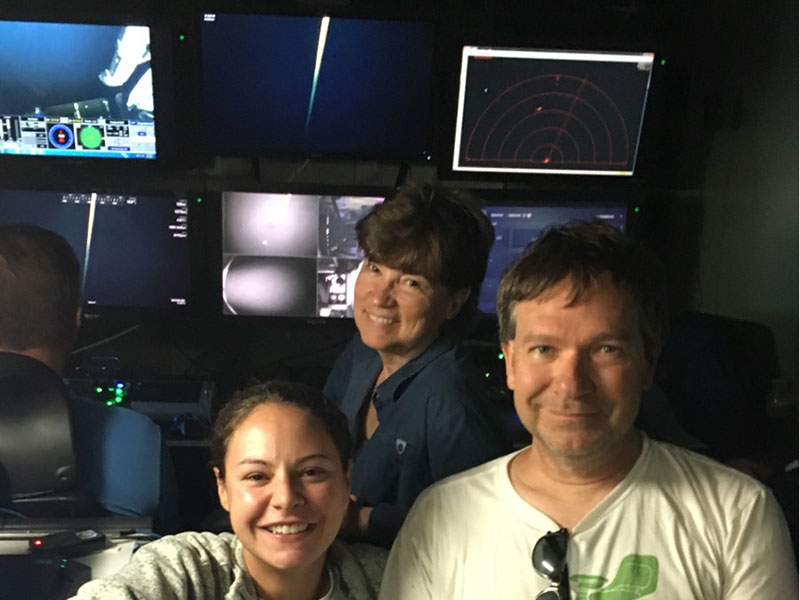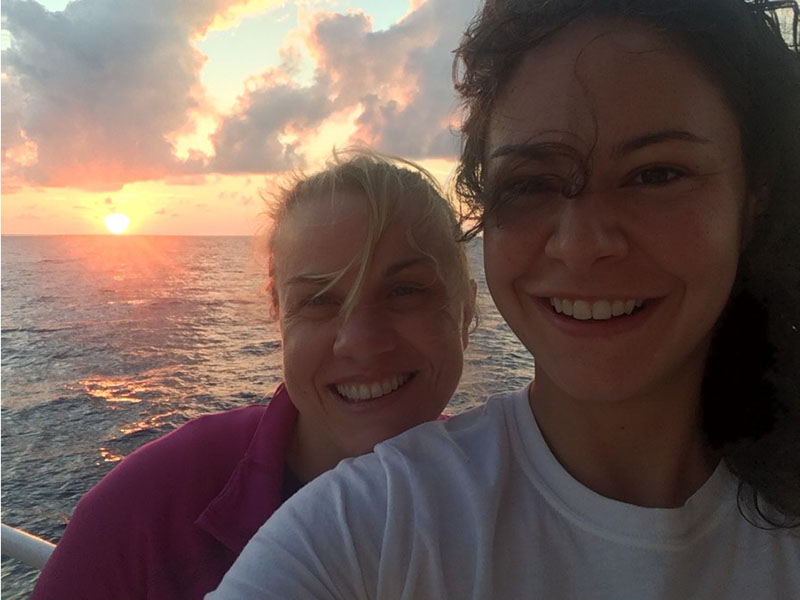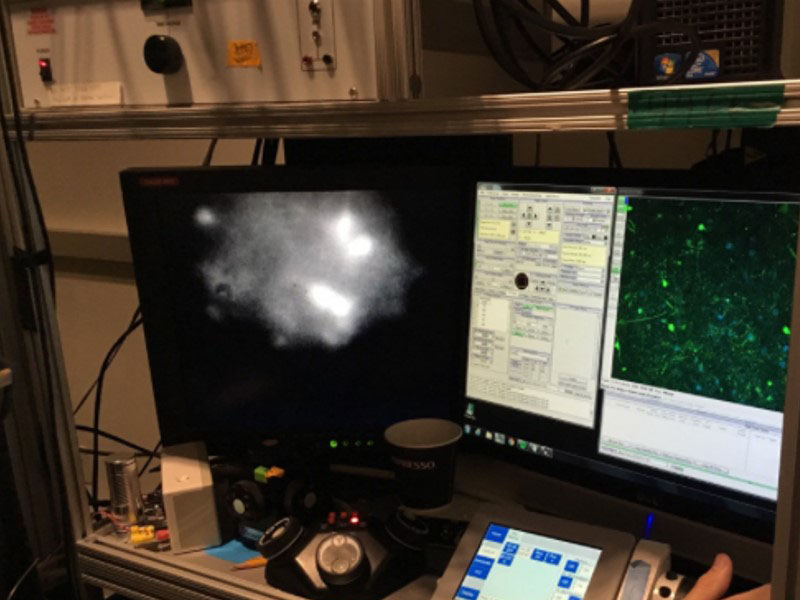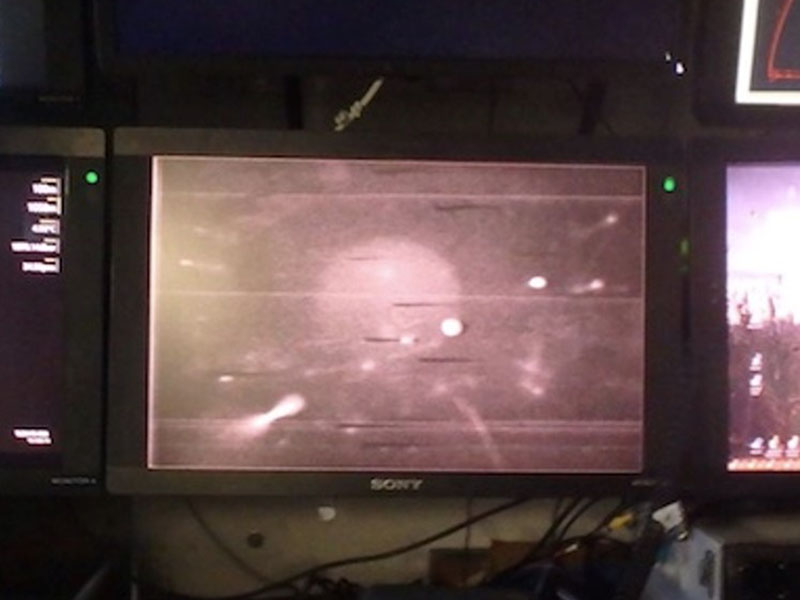
By Lorian Schweikert, Ph.D., Postdoctoral Fellow – Florida International University
June 12, 2019
I wish you were out here with us. I really do. This experience is too grand to keep to myself. I suspect that our experience out here is exactly as you envision – vast blue views in all directions, deep waters filled with life unimaginable, and of course, long days of rewarding work. The isolation at sea gives me time to reflect and my one constant is overwhelming gratitude.
You see, I wasn’t supposed to be on this cruise, not originally anyway. Like Charlie in the Chocolate Factory, I won the golden ticket and received an invite to “Journey into Midnight” to bring my own expertise. It’s hard to anticipate the discoveries we’ll make from the deep, but the one thing I know for sure is that I’m surrounded by one of the most elite teams of marine biologists on the planet. The most seasoned of the group is teaching us how to explore the ocean depths and about life we can expect to see there. The next generation, benefiting from their experience, going on to be leaders of their fields. Then there’s me and my peers, in the midst of our training, working to be masters of our crafts and refining our skills out here in a way that can’t be replicated back on shore. I’ve heard that scientific advising – the student to advisor relationship – is the last true apprenticeship.

Three generations of postdoc advising. Dr. Lorian Schweikert’s previous postdoctoral advisor is Dr. Sönke Johnsen (bottom right) and his postdoctoral advisor was Dr. Edie Widder (back). Image courtesy of Journey into Midnight: Light and Life Below the Twilight Zone. Download image (jpg, 90 KB).

Dr. Schweikert’s current postdoctoral advisor is Dr. Heather Bracken-Grissom. They work together at Florida International University. Image courtesy of Journey into Midnight: Light and Life Below the Twilight Zone. Download image (jpg, 85 KB).
Advising is a life-long commitment and often extremely formative in a mentee’s professional career. Making this experience evermore sweet, I have the good fortune of having two of my major advisors by my side, training me on this cruise. Each of our interests and abilities out here distinctly differ, even mine to each of my major advisor’s (Dr. Heather Bracken-Grissom and Dr. Sönke Johnsen). In fact, I’m a sensory neuroethologist, or more simply, I study the neurobiology of sensory-based behavior. Not long ago, I attended a neural imaging course, witnessing living neurons light up on a screen as they became activated. It was a wonderous sight. And if you can believe it, I relived it yesterday out here in the middle of nowhere, Gulf of Mexico. I witnessed bright bioluminescent organisms at 2,000 meters (6,560 feet) fall against our ‘splat screen’ attached to our submersed remotely operated vehicle light up in a beautiful and random constellation not unlike the activity of the brain cells.
Consider this – the activity of brain cells exists as electrical signals, yet we have devised a way to study them by activating them by light and recording their responses with visual images. Why have we expended the effort to make an electrical process visible when we could absolutely study this process another way? The answer is because we’re visual creatures. In many ways, light, color, and vision are central to how we experience and understand our world, and in the deep sea where you can generate your own light, those elements become more important than ever. That’s why we’re out here, studying the most extreme examples of light, color, and vision that this world has to offer.

Using advanced molecular tools, cultured brain cells (neurons) are seen lighting up in response to activation during an imaging course at the Max Planck Florida Institute for Neuroscience. Shown in black and white. Image courtesy of Journey into Midnight: Light and Life Below the Twilight Zone. Download image (jpg, 94 KB).

Bioluminescent organisms are visualized using a low-light camera attached to the submerged ROV. Shown in black and white. Image courtesy of Journey into Midnight: Light and Life Below the Twilight Zone. Download image (jpg, 63 KB).
Our world is a vast unknowable place, but at the same time is filled with elegant reminders that everything is connected, the complexity is to be embraced, and lastly, like with my advisors, we’re all in this together.